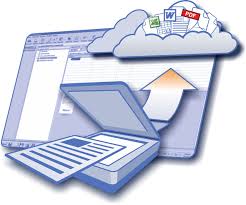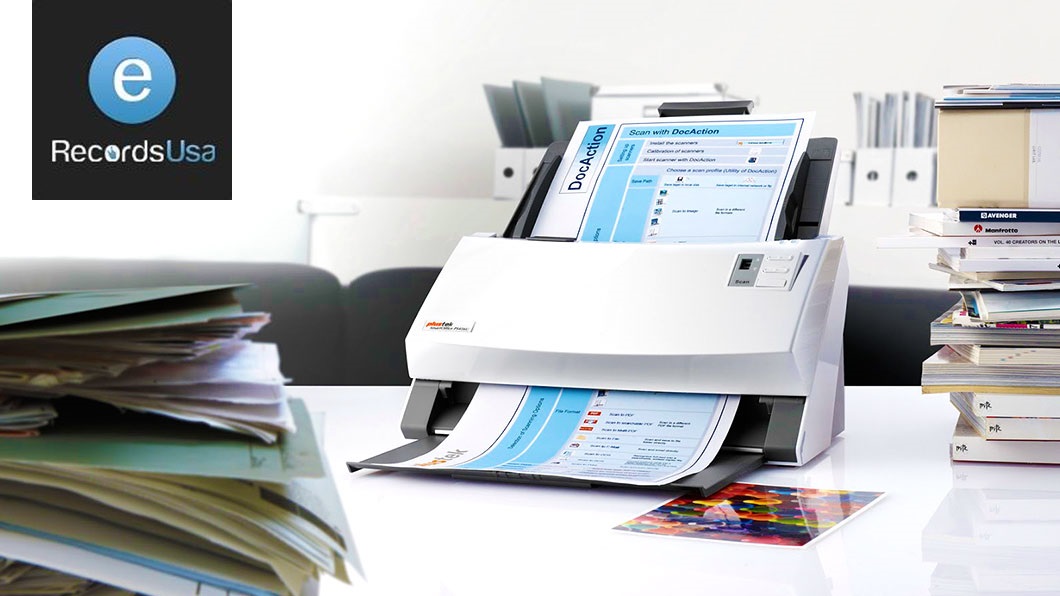Paper piles up. It takes up space. It is heavy and has to have ideal storage conditions. Even when they are in the form of books, searching through pages of paper is a cumbersome, frustrating task. There are long-term difficulties associated with storing paper as well.
For instance, paper is flammable. Many family records were lost during the Civil War because courthouses, which kept important records in books made of paper, were burned. Paper is also subject to destruction by water and mold.
Consider the idea of looking up the answer to a question you might have, for instance—”when was paper first used for writing”—in a 1990s library (full of books, but no Internet).

- How long would that take?
- How would you go about it?
Now, consider going online and typing that same question into an Internet search engine.
- How long would it take to get an answer?
Clearly, storing documents, records, and information in “the cloud” and accessing them by Internet search engines is much faster and more efficient than keeping the same data on paper.
While this is abundantly clear, the problem is that there is still a lot of paper out there in the world with important information on it that needs to be preserved.
Since we can’t trust paper to last forever and keep our information safe, we need to find a way to save the data stored on paper.
- How about scanning it?
- How much would that cost?
What Is Document Scanning Anyway?

A paper scanner is a device that uses light sensors to record an image of whatever is on a piece of paper that you place on the scanning glass or run through the scanning port.
The image recorded by the scanner is translated into bits of information that can be retrieved in different formats and which will look exactly like the information that was on the original piece of paper.
The incredible amount of detail preserved in this computer code is only one of the amazing qualities of scanning. Another extremely important feature of scanning is that this microscopic bit of computer data can be stored on a multitude of devices: computer memories, flash drives, DVDs, and massive computer memory banks called servers (aka, “the cloud”).
As this suggests, scanned documents cannot only be easily stored but easily moved as well. Consider that you can have a real-time video conference with a person on the other side of the world.
In the same way, you can instantly send any number of copies of that scanned piece of paper to any person anywhere who has Internet access. Seen in this light, a piece of paper seems quite limited.
Average Price of a Documents Scanning Project
There are several factors involved in determining the price of a scanning project. We can take a look at these one-by-one.
For the sake of this investigation, let us assume we need to send a document or a group of documents or even boxes of documents out to be scanned since we don’t have the adequate ability to do the scanning ourselves.
How Much Does Each Document Scan Cost?
Most experts say that you can expect to pay between 7¢ and 20¢ per scan. This depends on several factors, such as the number of pages being scanned; the more pages, the lower the cost. Additionally, the size and condition of the pages to be copied play a role in the pricing.
- Scans usually assume that the original is the size of a sheet of typing paper, 8.5 x 11 inches.
- Larger pieces of paper, such as 8.5 x 14 or 11 x 17 inches, sometimes require special handling or special equipment.
Scanning companies use high-speed equipment. However, if you need large-format fragile book scanning, it must be done by hand, and therefore each scan will cost more.
A big question is whether you are scanning the document to save it, send it, or make another copy.
Are the Documents Ready to Be Scanned?
If the pages are stapled together, folded, dogeared, or not uniformly stacked, they’ll have to be sorted and arranged for scanning by hand. This drives the price up.
Ideally, when you take your document for scanning, the pages will be in order, in good condition, and nicely stacked together so they can be placed in an automatic scanner at the same time.
What Needs to Be Done with the Document after Scanning?
If you are making another copy of the document, sometimes a document needs to be scanned and then collated, broken into smaller groups, sorted in some way, and perhaps stapled.
Many scanning companies have machines that can do all of this. However, additional costs are incurred for these functions.
Other Factors Need to Be Considered as Well
Several other considerations, especially security and storage, come into play when you are evaluating just how much it will cost you on average to scan a document.
A couple of things to remember are that the better the document’s quality, the better the quality of the scan and, usually, the lower the price of the scanning.
This is because good quality documents require less special handling. Finally, the more preparation you can do beforehand and the more sorting and collating you can do afterward, the less the cost of your scanning project.
Get Free Quotes on Your Document Scanning Services Today!
Would you like to receive a free quote for Document Scanning prices? Call +1.855.722.6669 or eMail us at [email protected].
Pricing will, of course, depend on the type and size of your documents, whether more than light preparation is required, and whether you have specialized requirements that could increase the complexity of the job. You can also take benefit of eRecordsUSA’s document scanning services like EHR EMR Scanning Services / Finance And Accounting Records Scanning / Proof Of Delivery Scanning Services / Mortgage Documents Scanning Services.













